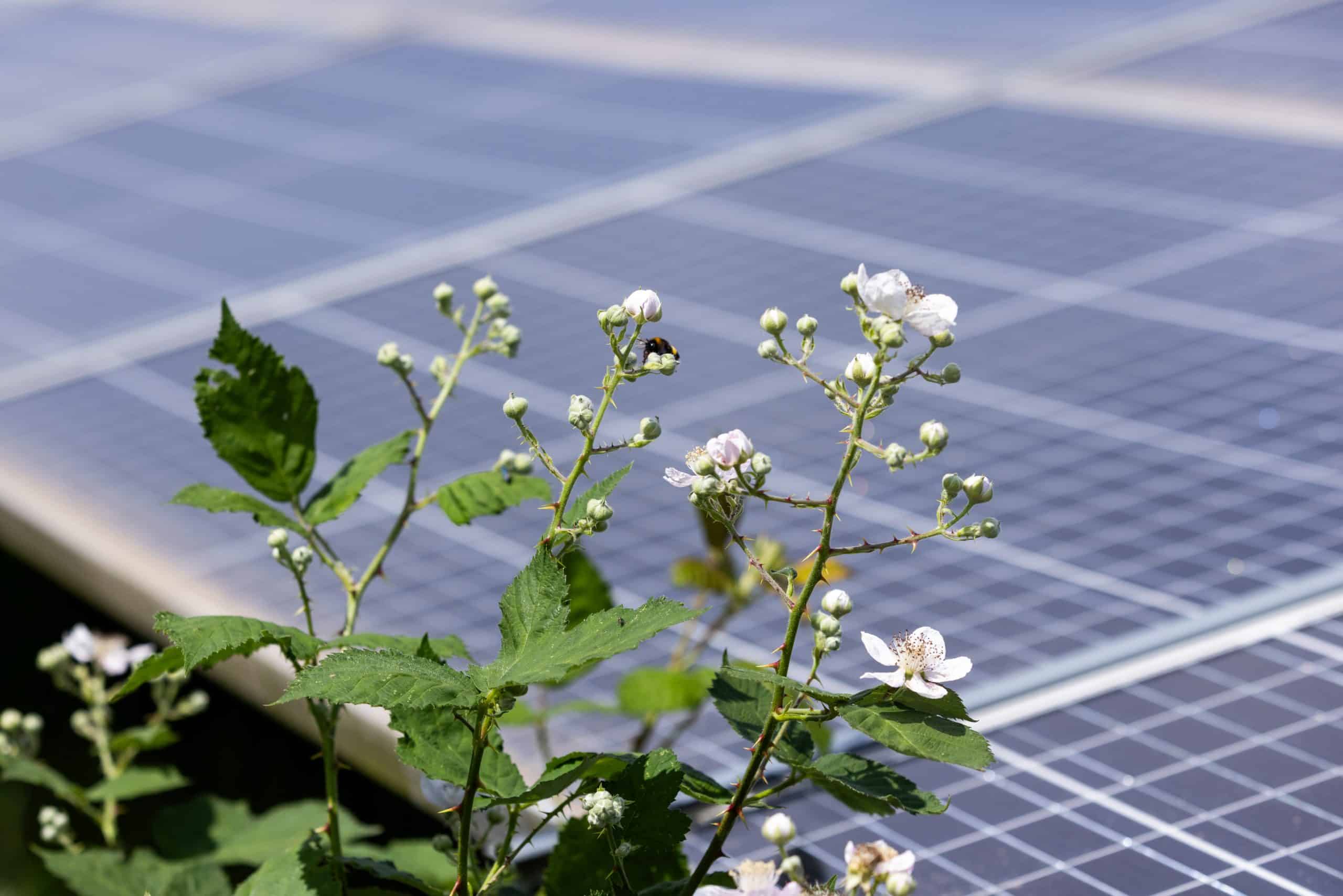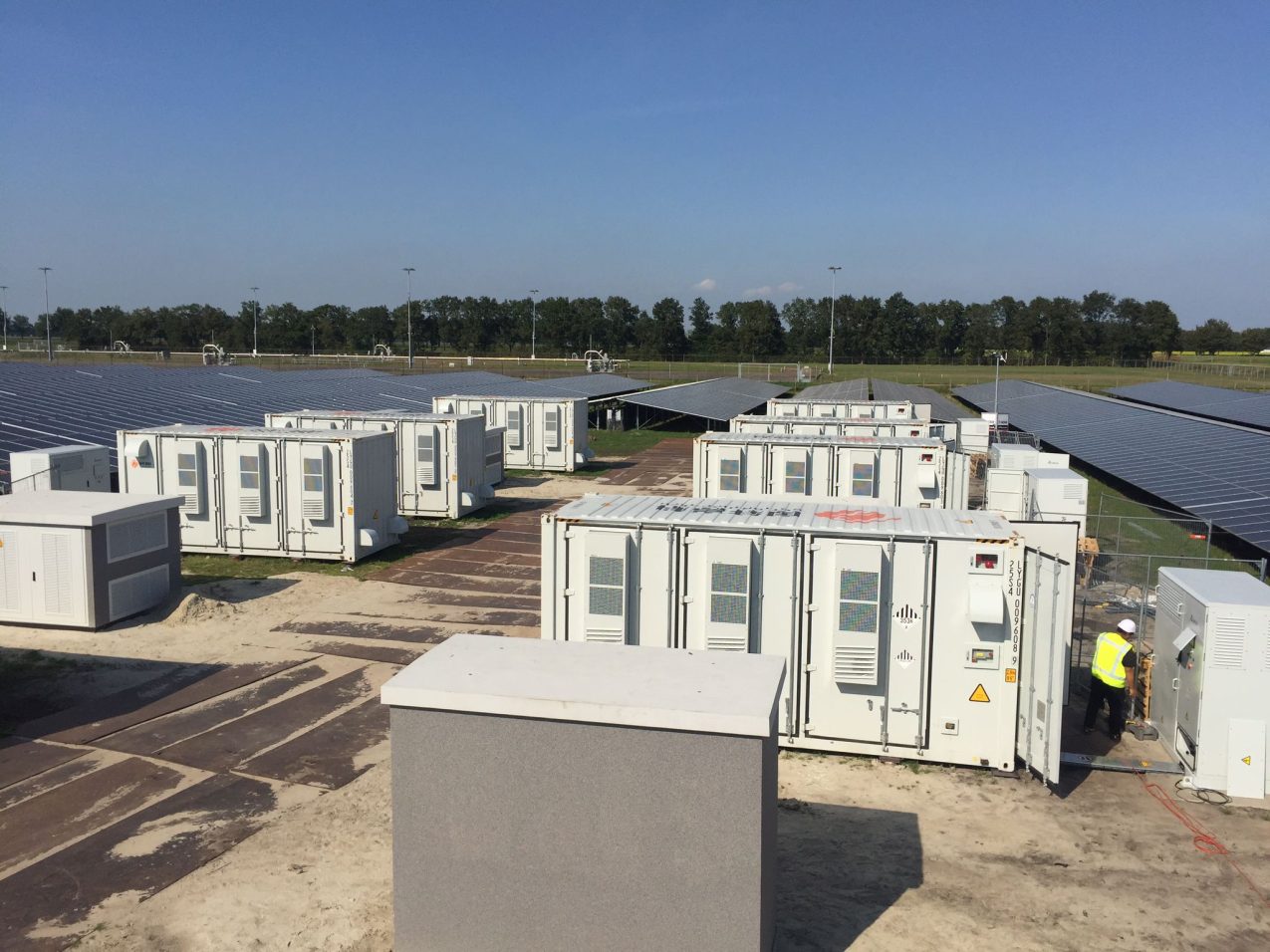Agri PV: vertical mounting of bifacial panels
With the rise of bifacial panels, the question of whether panels can be mounted vertically is increasingly being asked. On this page, we explain the advantages of using vertically mounted solar panels.
Advantages vertical solar panels (agri pv)
Vertical solar modules have several advantages over traditionally installed solar panels. Compared to conventionally mounted panels, vertically mounted bifacial modules require a significantly larger row spacing to avoid mutual shading. On the one hand, this leads to lower land utilisation (power density per hectare). On the other hand, the larger row spacing ensures that the land remains usable for agriculture. Agricultural machinery can simply pass between the panels and there is also enough space for livestock. Unlike compact south-facing or symmetrical setups, the soil is not cut off from sunlight and rainwater. As a result, crops can simply continue to grow or flower if there is sufficient row spacing. This is naturally good for biodiversity and soil life.
Cooperation model: Agri PV
Because agricultural production remains possible, the land rent for solar park developers can be lower compared to conventional solar parks. The possibility of dual land use also increases support for solar farm development. Vertical solar panels meet objections from governments and agricultural interest groups that more and more agricultural land is being withdrawn for solar parks. Vertical solar panels thus provide a basis for cooperation between agricultural landowners, project developers, interest groups and governments.
Bifacial panels
Bifacial solar panels are panels that convert sunlight into electricity at both the front and the back. The back side of bifacial panels (like the front side) converts direct radiation but mainly diffuse light that is reflected off the ground. Bifacial panels give a higher efficiency than traditional solar panels. How much higher this efficiency is depends on the arrangement (inclination angle and row spacing) of the panels, the ground (grass, sand, snow) and the cell technology.
Bifaciality factor
Bifaciality factor is the ratio between the power generated by the back side of a bifacial solar module and the power generated by the front side. It is a measure of the module's ability to generate power from both sides. The bifaciality factor increases with new cell technologies.
Different cell types and technologies have different bifaciality factors, which determine the ratio of front-end efficiency to back-end efficiency. N-type cell technologies such as HJT and TOPCon have higher bifaciality compared to PERC.
The cell technology with the highest bifaciality factor is heterojunction with intrinsic thin layer (HIT). For now, the additional price of these panels does not outweigh the yield advantage.
The bifaciality factor in bifacial modules currently varies between 70% and 95%. A bifaciality factor of 95% means that under the same conditions, the back side produces as much as 95% of the energy produced by the front side.
Albedo value
The so-called albedo value is the measure of how well a substrate reflects solar radiation. For example, the albedo value is about 10 % when the sun is irradiating deep water, 10 % - 30 % for meadowland and up to 75 % - 95 % for freshly fallen snow. The albedo value of the surrounding surface is an important factor for yield gains.
Slope angle and travel distance
Of course, the albedo value is also influenced by the panels and other objects near the panels that cause shade. In the Netherlands, panels are often installed in a so-called symmetrical arrangement, covering most of the ground. In this arrangement, the yield advantage of bifacial panels is zero. Even when the row distance between south-facing panels is very small, the yield advantage is limited.
Yield advantage bifacial panels in the Netherlands
In the end, it's all about the yield benefit, of course. If an installation is conveniently located in ideal conditions (high albedo e.g. snow or a clear roof surface, perfect orientation, no shading), the yield benefit can range between 30% and 50% per year. In the Netherlands, the yield gain is more likely to be between 5% and 15% per year, depending on the system design and the area under the panels.
Better guarantees
Bifacial solar panels usually have a backing made of glass instead of plastic. Many manufacturers give longer product warranties on these, and a better power guarantee.
Favourable energy generation profile
Vertically mounted bifacial solar panels are interesting because of their favourable energy production profile. Instead of one afternoon maximum, vertically mounted panels-those mounted in rows from north to south-produce two peaks: one in the morning and one in the afternoon.
Besides the higher energy yield, the real advantage of vertically installed panels is that more electricity is generated at times when power prices on the spot market are higher. In the Netherlands, more and more installations are planned and built without the SDE subsidy. The efficiency of these installations is then determined by the electricity price on the power exchange. The ability to avoid the so-called "cannibalisation effect" (drop of the afternoon peak price even to the level of negative prices) of PV installations then becomes a decisive factor. Projects realised without an SDE subsidy, and thus dependent on low electricity prices in the middle of sunny days, therefore benefit from a vertical panel arrangement.

Conclusion bifacial vertical PV installations
Bifacial solar panels generate more energy on the same panel area, as the active back of the panels contributes to the yield. As the installation and BoS costs are at the same level, this leads to higher efficiency. The price of bifacial is almost the same as monofacial panels.
Bifacial solar panels are suitable for application in noise barriers, parking canopies, floating PV systems and vertically mounted PV systems (agri pv).
Since vertically mounted installations allow the land to be used for agricultural purposes at the same time, you increase the chances of obtaining the necessary permits.
At the same time, the production profile of this type of power plant promises higher returns on the power exchange, which is especially attractive in the case of power plants operated outside the SDE scheme. Therefore, we recommend considering vertically mounted bifacial solar panels in your project.
See here. If you want to know more or want advice on agri pv.





